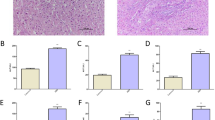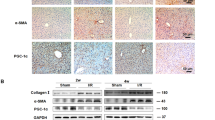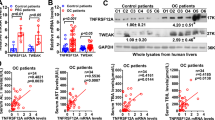Abstract
Kupffer cells (KCs), the liver resident macrophages accounting for 80–90% of the total population of fixed tissue macrophages in the body, not only play a key role in host defense via removing particulate materials from the portal circulation, but may also contribute to the pathogenesis of various liver diseases. We have previously demonstrated that KCs play an important role in controlling portal hypertension and hepatocellular injury via releasing thromboxane A2 (TXA2) in early fibrosis induced by one-week bile duct ligation (BDL). Production of TXA2 is controlled by cytosolic phospholipase A2 (cPLA2) that is activated by the interaction of entothelin-1 (ET-1) with its G-protein coupled ET receptor B (ETBR). However, the signaling pathways that contribute to the ET-1-induced activation of cPLA2 and production of TXA2 in KCs in the normal healthy or injured livers are not yet clear, which are investigated in the present study using isolated KCs from one-week BDL or sham rats. The pharmacological inhibition of cPLA2 or chelation of intracellular calcium abrogated the ET-1 induction of TXA2 from KCs. Compared to those from sham rats, KCs from BDL animals displayed a significantly enhanced responsiveness of p38 MAPK to ET-1, increased ETBR and Gαi subunit but decreased Gαq and Gα11 expression. Inhibition of ERK1/2 or Gq signaling abrogated significantly the ET-1 induction of TXA2 in sham KCs but only slightly in BDL KCs. In contrast, inhibition of p38 MAPK and Gi signaling markedly attenuated the ET-1 induction of TXA2 in BDL KCs but had no effect in sham KCs. Lastly, inhibition of PLC or PKC abrogated ET-1 induction of TXA2 in KCs from both sham and BDL groups. The hepatic stress (such as BDL) induces significant modifications in the receptor and intermediates of ET-1 signaling in KC and subsequently alters ET-1 signaling mechanisms, particularly a shift from Gq induced signaling to Gi induced signaling, in the activation of cPLA2 and production of TXA2 in response to ET-1.
This is a preview of subscription content, access via your institution
Access options
Subscribe to this journal
Receive 12 digital issues and online access to articles
$119.00 per year
only $9.92 per issue
Buy this article
- Purchase on Springer Link
- Instant access to full article PDF
Prices may be subject to local taxes which are calculated during checkout
Similar content being viewed by others
Author information
Authors and Affiliations
Corresponding author
Rights and permissions
About this article
Cite this article
Miller, A., Zhang, J. Altered Endothelin-1 Signaling in Production of Thromboxane A2 in Kupffer Cells from Bile Duct Ligated Rats. Cell Mol Immunol 6, 441–452 (2009). https://doi.org/10.1038/cmi.2009.56
Received:
Accepted:
Issue Date:
DOI: https://doi.org/10.1038/cmi.2009.56



